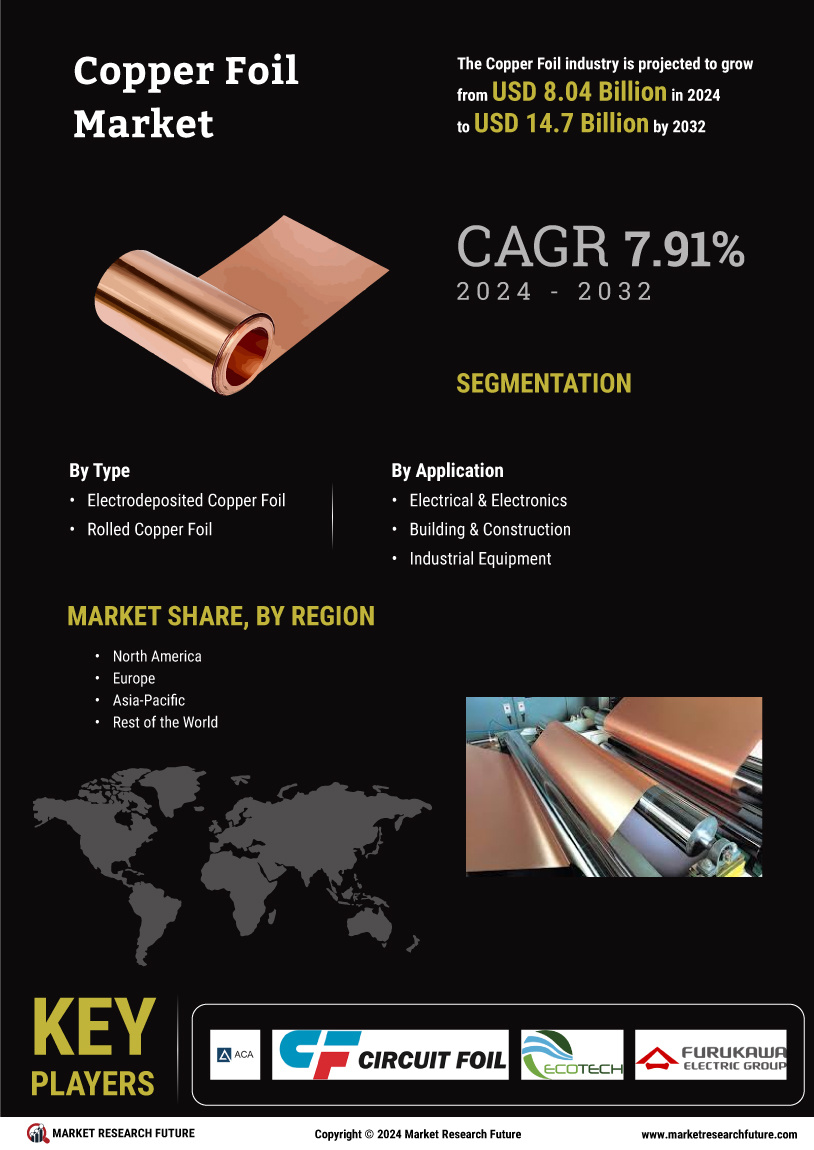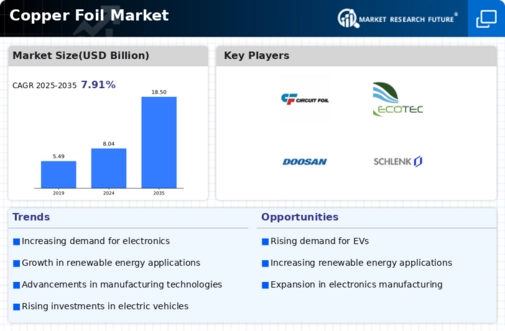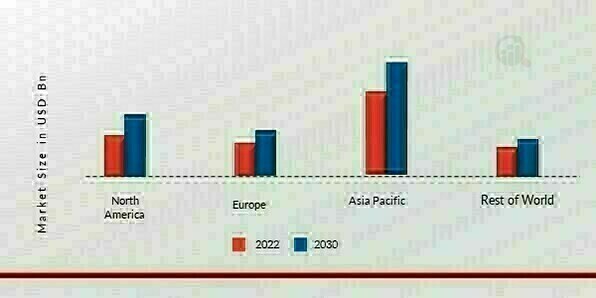Market Growth Projections
The Global Copper Foil Market Industry exhibits promising growth projections, with the market expected to reach 8.04 USD Billion in 2024. This growth trajectory is indicative of the increasing applications of copper foil across various sectors, including electronics, automotive, and renewable energy. The market is anticipated to expand significantly, potentially reaching 18.5 USD Billion by 2035, driven by factors such as rising demand for electric vehicles and advancements in manufacturing technologies. The projected CAGR of 7.86% from 2025 to 2035 further underscores the industry's potential for sustained growth, reflecting the critical role of copper foil in supporting technological advancements and sustainable practices.
Rising Demand for Electronics
The Global Copper Foil Market Industry experiences a surge in demand driven by the electronics sector. As consumer electronics become increasingly sophisticated, the need for high-quality copper foil in applications such as printed circuit boards and batteries intensifies. In 2024, the market is projected to reach 8.04 USD Billion, reflecting the growing reliance on copper foil for efficient electrical conductivity. This trend is expected to continue, with the market potentially expanding to 18.5 USD Billion by 2035, indicating a robust growth trajectory. The increasing adoption of electric vehicles and renewable energy technologies further propels this demand, highlighting the critical role of copper foil in modern electronics.
Growing Renewable Energy Sector
The Global Copper Foil Market Industry is significantly influenced by the expansion of the renewable energy sector. As countries worldwide shift towards sustainable energy sources, the demand for copper foil in solar panels and wind turbines increases. Copper's excellent conductivity makes it an ideal choice for enhancing energy efficiency in these applications. The market's growth is further supported by government initiatives promoting renewable energy adoption, which are expected to drive investments in copper foil production. This trend aligns with the projected market growth, potentially reaching 18.5 USD Billion by 2035, as the renewable energy sector continues to evolve and expand.
Increasing Electric Vehicle Production
The rise in electric vehicle production plays a pivotal role in shaping the Global Copper Foil Market Industry. Electric vehicles require substantial amounts of copper foil for their batteries and electrical systems, leading to heightened demand. As manufacturers ramp up production to meet consumer preferences for eco-friendly transportation, the copper foil market is poised for growth. The anticipated CAGR of 7.86% from 2025 to 2035 reflects this trend, as automakers increasingly integrate advanced technologies that rely on copper foil. This shift not only supports the automotive industry but also reinforces the importance of copper foil in achieving sustainable mobility solutions.
Advancements in Manufacturing Technologies
Innovations in manufacturing processes significantly impact the Global Copper Foil Market Industry. Enhanced production techniques, such as electroforming and rolling, lead to improved quality and reduced costs of copper foil. These advancements not only increase production efficiency but also enable manufacturers to meet the rising specifications of high-performance applications. As a result, the market is likely to benefit from a CAGR of 7.86% from 2025 to 2035. This growth is indicative of the industry's ability to adapt to technological changes, ensuring that copper foil remains a vital component in various applications, including telecommunications and automotive sectors.
Regulatory Support and Sustainability Initiatives
Regulatory frameworks and sustainability initiatives significantly impact the Global Copper Foil Market Industry. Governments worldwide are implementing policies that encourage the use of sustainable materials and practices in manufacturing. This regulatory support fosters innovation in copper foil production, promoting environmentally friendly methods that reduce waste and energy consumption. As sustainability becomes a priority, manufacturers are likely to adapt their processes to align with these regulations, enhancing their market competitiveness. The ongoing commitment to sustainability may further drive the market's growth, potentially reaching 18.5 USD Billion by 2035, as industries seek to comply with evolving environmental standards.






